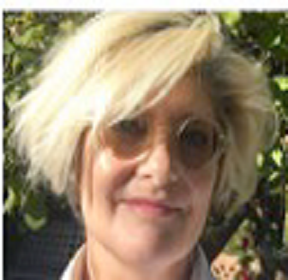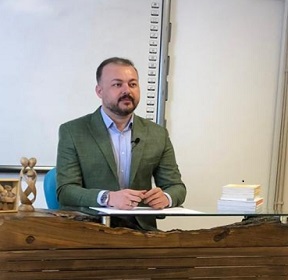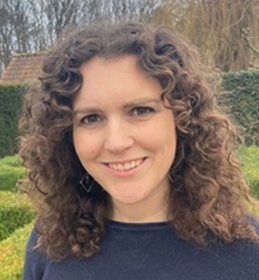Speakers
Helen Brice
Maudsley Hospital, UKTitle: A place at the table. How neuroscience came to the rescue of talking therapy.
Abstract:
In recent years in the UK, the treatment for mental illness became a combination of 3 elements: psychiatry, medication and Cognitive Behaviour Therapy. Traditional talking therapies were deemed less suitable, because they took too long and didn’t “cure” people. Short term, CBT treatment looked as if it were the “new thing”. Then came neuroscience. Neuroscience brought a resource that therapists can use: it told us that the brain and the nervous system are intrinsically relational; that we have one brain and one nervous system. Neuroscience gave psychotherapists the limbic system, polyvagal theory, limbic revision, and the importance of biotemperament. Traditional talking therapists, and those who are concerned with matters of the mind and bodymemory have consistently and repeatedly maintained that reciprocal relationships – or just one - is absolutely fundamental for our wellbeing. Neuroscience gave us something that we could “use” – tools, skills – with which psychotherapists could agitate the sediment in which our clients had become stuck. I will attempt to show how two apparently opposing worlds of psychotherapy and neuroscience came together, and how exciting this is for traditional talking therapy. You will hear real clients’ stories and how I worked with them across five distinct settings including private hospital, private practice and prison. I will explain how I use two completely different modalities of training – Existential Psychotherapy (which challenges the medical model) and Dialectical Behaviour Therapy (which was born out of neuroscience); and how neuroscience gave us something we could use to treat the untreatables.
Biography:
Helen Brice has a busy private practice in London. She is a highly experienced psychotherapist for individuals and couples, with a specialist interest in Personality Disorders, particularly BPD/EUPD, and with clients who are emotionally over-controlled with personalities that are avoidant, obsessivecompulsive, paranoid and also chronically depressed or have anorexia nervosa. Helen’s referrals come from psychiatrists, the Maudsley Hospital and, since her pioneering Stimmung Therapy Programme for musicians and actors, the British Association Of Performance Arts Medicine and the Equity Charitable Trust. She spoke at the World Music Conference 2020, and at the Society For Existential Analysis Conference in 2018.
Soumya Sree Tangirala
University of Dundee Medical School UKTitle: Personality disorders – who are we?
Abstract:
Personality disorders cover a wide range of areas and it is quite hard to understand. I suffer from borderline personality disorder and its hard for me to even get the idea of things. Terms are given not because it makes you suddenly a different person but so it is easier for you to find acceptance within yourself. In addition to this it allows other people to gain an understanding of our complex brains. There is simply not enough awareness of how common these personality disorders are and how it affects us on a daily basis. This talk will explain the types of disorders classification, how common they are and some real life stories from myself, managing my traits of borderline personality disorder.
Biography:
Soumya embarked on a Gap year in 2018 and worked as a care assisstant in a care home and a support worker for autistic adults. 2019 she got accepted into Dundee Medical School and now is a 2nd year medical student
Sajad Haghshenas
Institute of cognitive science studying IranTitle: Central auditory perception disorder (capd) in neurodevelopmental deficit
Abstract:
Auditory processing disorder (APD) is a hearing problem that affects about 3%–5% of school-aged children. Kids with this condition, also known as central auditory processing disorder (CAPD), can't understand what they hear in the same way other kids do. This is because their ears and brain don't fully coordinate. Something interferes with the way the brain recognizes and interprets sounds, especially speech. With the right strategies, kids with APD can be successful in school and life. Early diagnosis is important. If the condition is not identified and managed early, a child is at risk for listening and learning problems at home and school.
Trouble Understanding Speech
Kids with APD are thought to sense sound normally because they usually can hear sounds that are delivered one at a time in a very quiet environment (such as a sound-treated room). The problem is that they usually don't easily recognize slight differences between sounds in words, even when the sounds are loud enough to be heard. These kinds of problems usually happen in a poor listening situation — such as when there's background noise or in a reverberant room like an auditorium — which often is the case in social situations. Kids with APD can have trouble understanding what is being said to them when they're in noisier places like a classroom, playground, sports event, school cafeteria, or party.
What Are the Signs & Symptoms of Auditory Processing Disorder?
Symptoms of APD can range from mild to severe and can take many different forms. If you think your child might have a problem processing sounds, ask yourself:
- Does my child often mishear sounds and words?
- Are noisy environments overwhelming when my child is trying to listen?
- Does my child's listening behaviors and performance improve in quieter settings?
- Does my child have trouble following verbal directions, whether simple or complicated?
- Does my child have trouble with spelling or phonics?
- Are verbal (word) math problems hard for my child?
- Are conversations hard for my child to follow?
APD is often misunderstood because many of its symptoms are similar to those found in other disorders. Also, APD symptoms can be hidden by other problems, like speech-language delays, learning disabilities, attention deficit hyperactivity disorder (ADHD), and depression. Auditory memory deficits, auditory attention problems, and sound sensitivity are not symptoms of APD, but also may involve trouble with using sound information correctly. Seeing an audiologist, and other related specialists, can help parents understand these conditions.
What Causes Auditory Processing Disorder?
Often, the cause of a child's APD isn't known. Evidence suggests that children with head trauma, lead poisoning, seizure disorder, or chronic ear infections are more at risk. Sometimes, there can be more than one cause.
How Is Auditory Processing Disorder Diagnosed?
If you think your child is having trouble hearing or understanding when people talk, have an audiologist (hearing specialist) examine your child. The most common way to diagnose APD is to use a specific group of listening tests. Audiologists often look for these main problem areas in kids with APD:
- Auditory figure-ground: This is when a child has trouble understanding speech when there is speech babble or ambient noise in the background. Noisy, loosely structured or open-air classrooms can be very frustrating for a child with APD.
- Auditory closure: This is when a child can't "fill in the gaps" of speech when it is more challenging. This can happen in a quieter situation but is more common when the speaker's voice is too fast or is muffled, making it hard for the child to make sense of the sounds and words.
- Dichotic listening: This is when a child has trouble understanding competing, meaningful speech that happens at the same time. For example, if a teacher is talking on one side of the child and another student is talking on the other side, the child with APD cannot understand the speech of one or both of the speakers.
- Temporal processing: This is the timing of a child's processing system, which helps them recognize differences in speech sounds (such as mat versus pat). It also helps them understand pitch and intonation (for example, asking a question instead of giving a command), understand riddles and humor, and make inferences.
- Binaural interaction: This is the ability to know which side speech or sounds are coming from, and to localize sound in a room. Although less common, this problem happens in children with a history of brain trauma or seizure disorders.
Most traditional APD tests require a child to be at least 7 years old. So, many kids aren't diagnosed until first grade or later. Newer electrophysiology tests (which use noninvasive electrodes to check the body's response to speech) can give some early information about the central auditory system in kids younger than 7.
Biography:
Most traditional APD tests require a child to be at least 7 years old. So, many kids aren't diagnosed until first grade or later. Newer electrophysiology tests (which use noninvasive electrodes to check the body's response to speech) can give some early information about the central auditory system in kids younger than 7.
Tine Gregoor
External Service for Prevention and Protection at Work BelgiumTitle: The psychological aftermath of voluntary medical assistance after the terrorist attack on the brussels metro: who’s the doctor for the doctor?
Abstract:
On 2016 March 22th, the national airport and the metro in Brussels were the target of two successive terrorist attacks which killed 35 people and seriously injured hundreds of others. Due to my voluntary commitment near the Maelbeek metro station, I was left out in terms of acute psychosocial relief, since I was not involved in an organization such as fire brigade or police. Research shows that in the aftermath of a terrorist attack, healthcare providers directly involved in the rescue of these victims report a significantly higher psychological impact, defined by Post Traumatic Stress Disorder (PTSD) symptoms, than those not directly involved. A number of victims and rescue workers exhibit a mixture of PTSD and mild Traumatic Brain Injury, which is a typical trauma-like brain concussion syndrome. Furthermore, unaffiliated volunteers seem to be at higher risk of posttraumatic stress, while professional rescue workers appear to be more protected.
As a child psychiatrist in training, I quit my residency after the attack, and started a carreer in occupational medicine. In Brussels, I work with employers and employees who experienced this tragedy. In my presentation I give answers on the following questions: How did they deal with this event? What impact do these terrorist attacks still have, five years later? What are the lessons learned in the field of psychotrauma care in Belgium? And finally, I will tell you my story about the impact of the event in my doctor’s office, for my patients and likewise, for me as a doctor.
Biography:
Tine Gregoor is a Belgian occupational health physician, child consultation clinic physician, public speakor, author and filantropist. She has experience in anesthesiology and childhood psychiatry and has a special interest in the field of maternity protection, fertility, mental illness, particulary in the management of psychotrauma.
During the 2016 Brussels attacks at the Maelbeek metrostation, Gregoor was a first responder, helped the most heavily injured in a prehospital setting. In her book ‘Bombs in Brussels’, which she wrote together with war journalist Joanie de Rijke, she goes in search of victims, relatives, aid workers, policymakers and security services five years afterwards.




